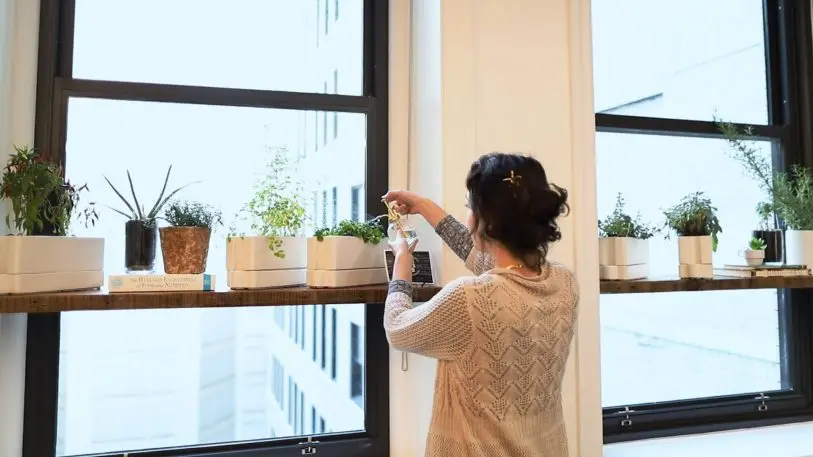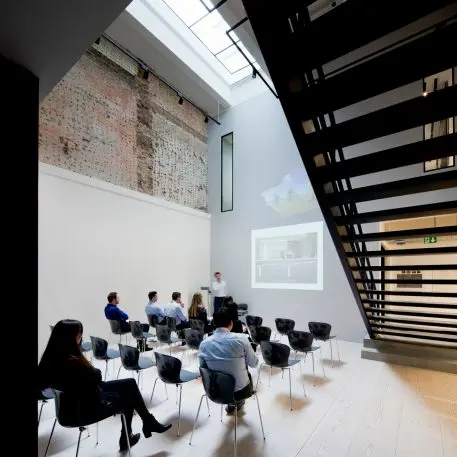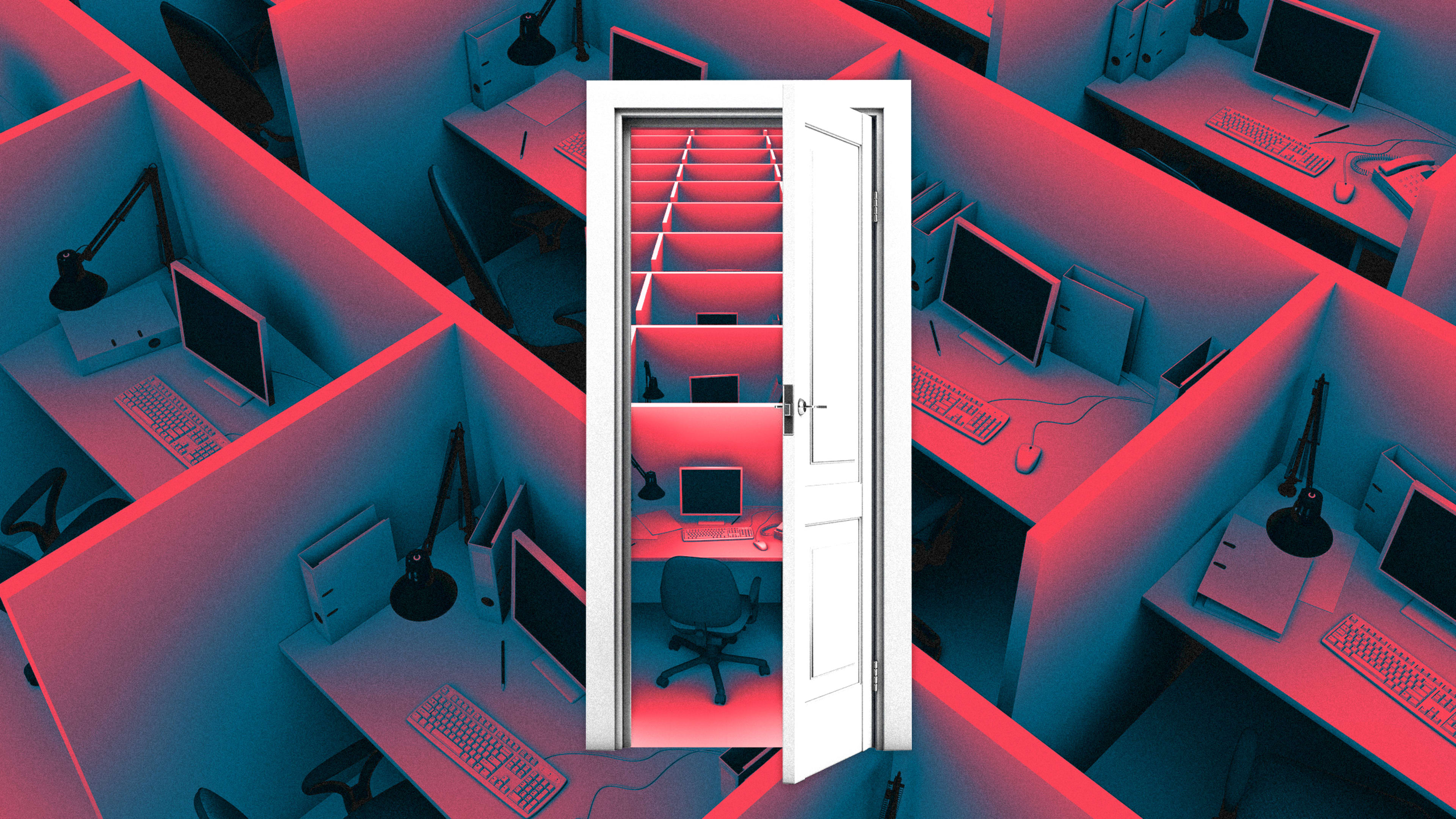The coronavirus pandemic forced many of us to work from home, and the big surprise is: Work got done. Employees are still productive. They like the freedom of remote work. Yet some organizations are scrambling to reopen their offices as quickly as possible, and to do so, they are trotting out design solutions that supposedly protect workers, from algorithms for re-densifying offices to clinical “scrub” rooms in reception areas to the sorts of cubicles made infamous by Dilbert and “The Office.” One problem: These strategies are reactionary and irrelevant long-term. To cultivate the office of the future, companies need to acknowledge three truths about the modern workplace that existed even before COVID-19:
1. Companies often prioritize real estate cost savings above employee well-being. That doesn’t work now, and it never worked well.
2. For offices to be effective, people have to want to work in them.
3. There is no “getting back” to normal.
We are at a crossroads. We can fall prey to panic-driven decision-making, or we can work to become resilient and flexible. Here’s how to better align tomorrow’s offices with how people actually work.
Put the well-being above all else when making workplace design decisions.
Open offices have made it easier for companies to squeeze more workers into smaller spaces, reducing real estate overhead costs. Workers have complained about these designs for years: They’re loud, they’re distracting, and there’s no privacy. Now they’re also a health hazard.

Talent is the most important asset to many organizations; it makes up their largest financial investment. So it’s only logical that workplace design would prioritize workers’ health and well-being. Emergency departments, the workplaces of front-line caregivers, offer an intriguing case study. In some hospitals,sensory boothsare being inserted into underused spaces so that staff can decompress. There has also been new investment in materials, such as flooring, that cost more yet decrease noise to reduce stress for employees and patients alike.
2. Invest in workplace research—especially when it leads to hard truths—and build upon the findings.
Work happens away from the office now because it must. The National Bureau of Economic Research estimates that 37% of all U.S. jobs can be done from home, which represents 46% of all wages. Pre-COVID-19, only 5% of jobs were done from home. So, the question is: Once we feel it is safe enough to have a choice, where will we opt to work?
The data exposes an uncomfortable truth: Any hurried rush to “get back to the office” misses the point that the reason we go to the office has changed. Working remotely has quantifiable benefits, and they’re not going away. We are interior designers at a large architecture firm, and our own internal research has revealed to us that employees believe working from home has helped them work smarter, faster and more productively. Findings such as these need to inform the next iteration of the workplace.

3. Embrace flexible work policies, and design workplaces that reinforce them.
Because flexible work is here to stay, where we get our work done is less important than how we get our work done. Flexible work policies put talent wellness and productivity first. They bridge the gap between how we do the work we need to do, and what the workplace needs to do. This is a design problem, yet our physical environment is only one piece of the solution. We must adopt a systemic solution.
Once you’ve figured out how your teams work—and how they want to work—you can start to think about what purpose a physical office might serve. And that might differ from one office location to the next. Before COVID-19, employees in our Chicago office wanted more access to nature, so we incorporated biophilic materials and started a plant program that includes edible herbs. Our employees in London wanted to feel more connected to the community, so we prioritized space to host art fairs, panels, and design events.
Now that we are in the throes of a pandemic, those priorities will no doubt change. The key is to have a process in place that allows the contemporary office to adapt. How will we remain resilient while fostering environments that make work enjoyable, meaningful, and valuable? By acknowledging truths we’ve long ignored and investing in work environments that put people first.
Elizabeth Fallon and Kate Davis are interior designers at HKS, a global design firm.
Recognize your brand’s excellence by applying to this year’s Brands That Matter Awards before the early-rate deadline, May 3.
